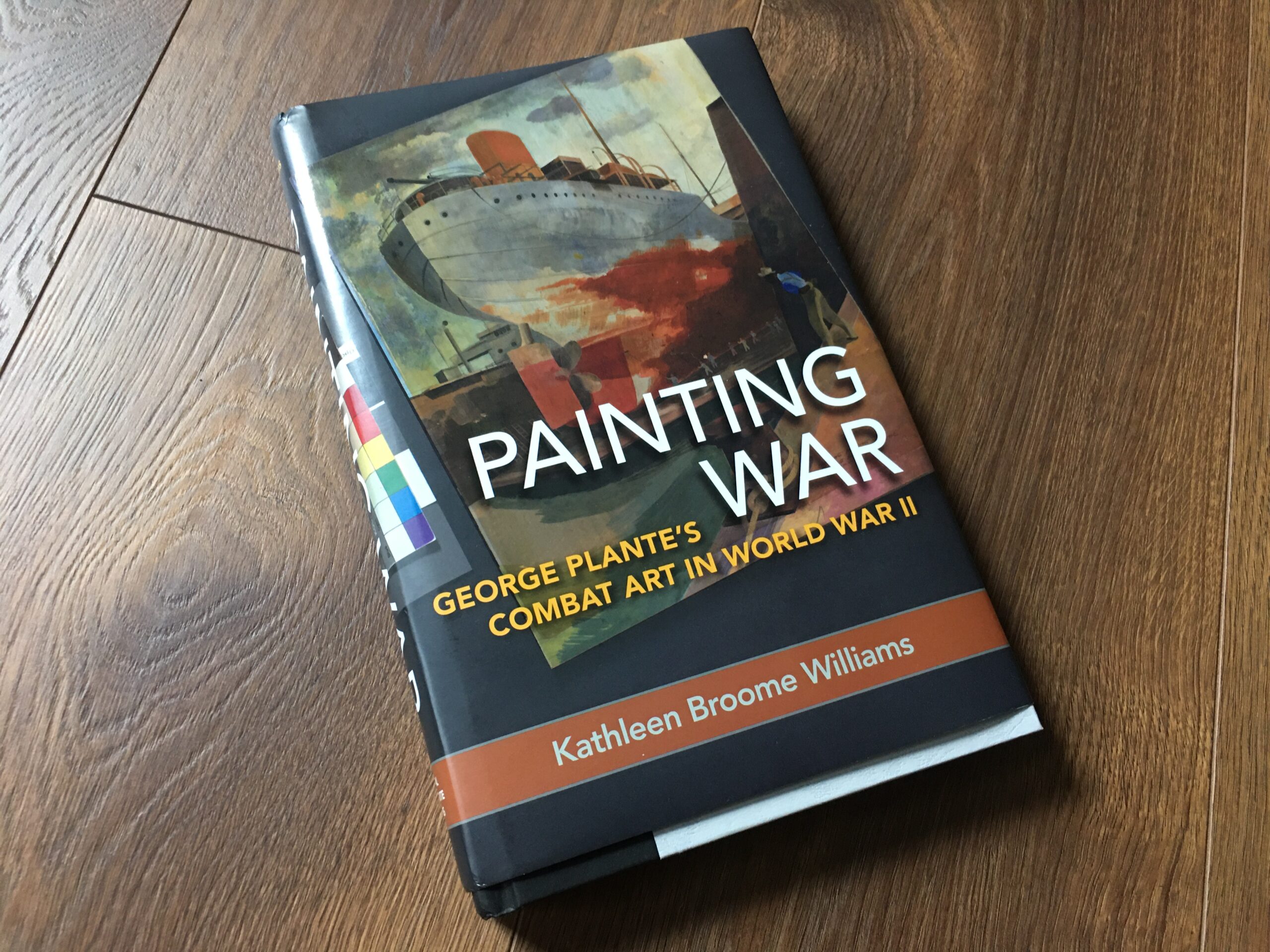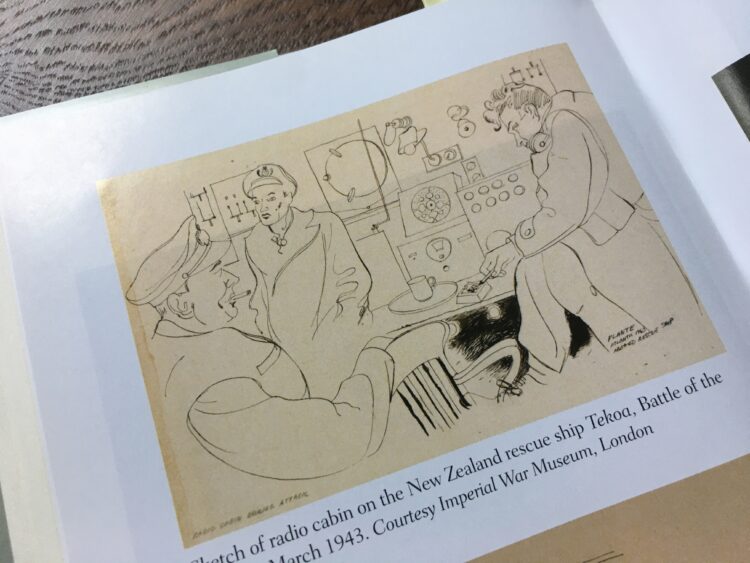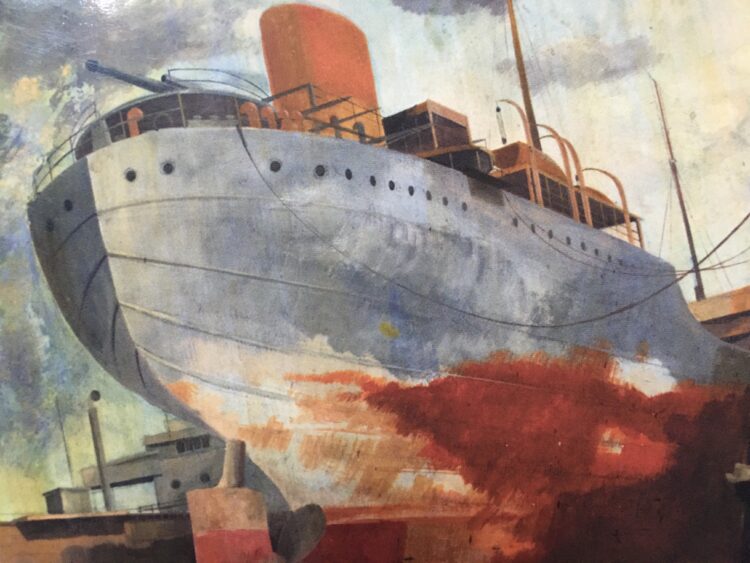Naval historian and author Kathleen Broome Williams told the story of George Plante, a Scottish artist who volunteered as a radio operator in the British merchant fleet during World War II. Kathleen Williams was also Plante’s stepdaughter. She was entertained by her stepfather’s stories, while growing up. She once thought his stories were amusing, but after his death she realized she wanted to tell his story. She set about writing his biography.
She peppers the book with some great, little snippets of his time at war. Britain of course was under severe war time rationing. I recollect reading a funny story she wrote about him smuggling cigarettes, and how contraband from America was smuggled in the hold of the ship; you should get a good laugh reading that one.
Plante didn’t begin his career as an artist. He began as a volunteer radio operator, and through his war journey began to depict what he saw aboard various ships. Over a two-year period while travelling between the United States and Britain, Plante chronicled his time in the fleet painting when he could. He dodged U-boats and battled the harsh elements while out at sea. I truly enjoyed reading this book.
Plante was a very industrious person; he spent much of his free time when his ship was docked in New York pursuing contacts in the art world and advertising. It was right after he pursued contacts that agents of the British Ministry of Information (MOI) and of the War Artists Advisory Committee (WAAC) wanted to get hold of him. He was recruited as an artist to rally Americans for the war effort in Britain. The WAAC gave him facilities to paint in. Plante served them by producing overt propaganda art.
Today much of his art is held in various places, such private homes and public spaces. Some of his art can be found on display at the Imperial War Museum in England. Plante produced many works in gouache, which is a simple, water-color paint, chronicling his time on ship during the 1941 Battle of the Atlantic. There are some wonderful pictures inside the book. Paintings of the ship called the Sourabaya, are very striking and so are his renderings of planes and a destroyer. One of his most beautiful paintings in my opinion is a painting he did of the Southern Princess burning in the sea, completed in 1943. The U-boats at that time sank 108 ships alone, and eventually his tanker was torpedoed and sank. He regrouped and worked for the Americans in Egypt and Italy, and other groups to sway opinion of the war, to one way or another.
I think one of the most interesting campaigns he worked on was for Gleem toothpaste. Plante had to find a way to convey to British men that health and hygiene products that were considered effeminate, were actually good for men. He used psychological warfare techniques to ridicule bad behavior to illicit change. All of his illustrations for the war effort are interesting. He created art that would demonize the Nazi and Fascist enemy, and sway opinion, particularly among the Yugoslavs who were fighting the Nazis. He sought to arouse opposition to them among the occupied peoples under Nazi control. “Will you be the last victim?”, a poster he did, is crude. Yes, much of his art lacks the crispness of art produced today, using modern digital art software, but this is why the book is such a great read. His renderings of his daily life are a wonderful addition, not only to art history but to war history. Much of the art is simple, and used primitive techniques, which made me enjoy the art that much more.
I loved the book. Plante had a life-long love affair with America and in 1994 became a U.S. citizen. Please take a look at this book. I think you will enjoy reading it.
Material Disclosure
I received this product as a courtesy from the manufacturer via Spotter Up so I could test it and give my honest feedback. I am not bound by any written, verbal, or implied contract to give this product a good review. All opinions are my own and are based off my personal experience with the product.
*The views and opinions expressed on this website are solely those of the original authors and contributors. These views and opinions do not necessarily represent those of Spotter Up Magazine, the administrative staff, and/or any/all contributors to this site.



